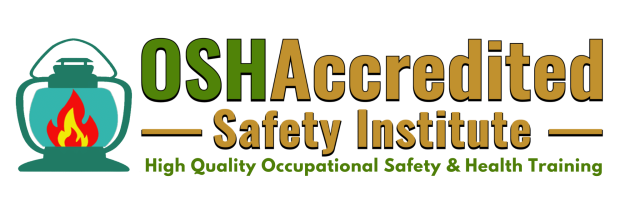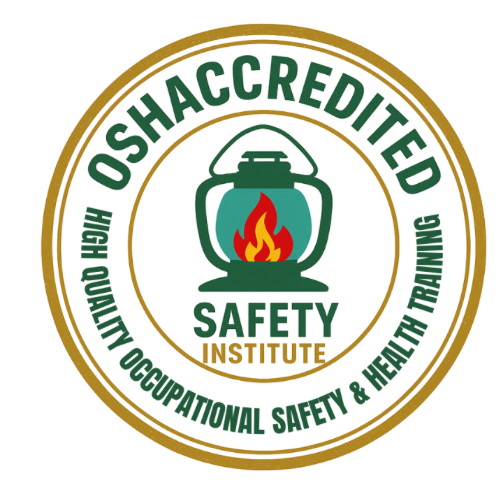Accredited Safety Courses for Workplace Compliance and Risk Reduction
Accredited Safety Courses for Workplace Compliance and Risk Reduction
Workplace security is a fundamental responsibility for any organisation. One of the most effective ways to fulfil these objectives is designed to align with legal mandates and best practices through accredited safety courses. These courses empower employees with significant knowledge and skills to handle dangerous conditions, understand protocols, and prevent events.

Why Safety Education is Essential in the Workplace
Today’s workplace, whether industrial, construction-based, health-related, or office-centred, presents a variety of potential threats. From slip and fall to chemical exposure and machine malfunction, danger can be much more serious. An active safety strategy, which is based in strong training, significantly reduces these risks.
Understanding the Importance of Safety Courses
Enrolment of employees in well-structured security courses provides several benefits. These courses suit various roles and industries, ensuring that participants learn about specific dangers relevant to their functions. Whether it is construction safety, chemical handling, or emergency preparation, these courses provide a real-world landscape and practical knowledge.
The main objective is to reduce workplace injuries, promote a security culture, and support overall compliance efforts. Certified programs often include evaluation, hands-on performance and certification tests to verify the qualifications of the learner.
Developing a Culture of Safety Through Safety Training
The creation of a culture that prefers safety begins with comprehensive safety training. This process involves more than participating in only one class; This encourages behavioural changes, improves dangerous beliefs, and increases accountability at every level of the organization. Managers, supervisors, and employees should be attached to constant and relevant training to remain equally new hazards and regulatory updates.
Security training also promotes morale. Workers feel more secure and valuable when they are trained to deal with emergency conditions, reduce contact with dangers, and navigate risks from responsibility. This leads to increased awareness of fewer accidents and high productivity.
Role of Certified Instructors and Updated Curriculum
One of the important components of successful training programmes is the quality of instruction. Recognized courses are often led by experienced professionals with knowledge of the practical field. These instructors not only provide educational materials, but also provide personal guidance, answer questions, and share the insight that goes beyond the knowledge of the textbook.
An equally important to the course is the material. An effective safety course integrates updated regulatory changes, modern equipment, and interactive modules. Employers must ensure that the course provider uses aligned resources with the latest standards and best practices.
Who Should Take Safety Courses?
Workplace security is a common responsibility. While some courses target the frontline workers coming in contact with physical risks, others are designed for managers, security officers, HR professionals, and business owners. Based on industry type and job ceremony, every level of employees should receive suitable security training for their roles.
For example, construction workers may require training in fall protection and scaffold safety, while office staff may benefit from fire safety and ergonomics sessions. It is important to assess the training requirements of each department and provide targeted learning interventions.
Exploring Industry-Recognized OSHA Courses
One of the most reliable standards for safety education is a series of OSHA courses introduced under the Professional Safety and Health Administration Guidelines. These courses are widely recognised in industries and make up the backbone of many security compliance programmes.
OSHA 10-hour and 30-hour training programs are popular examples, designed for entry-level workers and supervisors, respectively. Subjects usually include decline security, dangerous communication, electrical safety, and personal safety equipment (PPE). These certificates are often required for employment or contract bids, especially in areas such as construction, oil, and gas.
Benefits of Compliance and Risk Reduction
Risk reduction also means low disruption, legal issues, and compensation claims. When safety is woven into an organisation’s fabric, it creates an atmosphere of faith, efficiency, and long-term stability.
Customizing Training to Meet Workplace Needs
Customised learning also involves choosing a mode of delivery-in-law, in-tradition, online, or mixed-it fits within the operation of the company. The ongoing assessment, refresher modules, and displays on the hands further strengthen the retention of knowledge for a long time.
Tracking and Documentation for Compliance
Employers should also maintain records of all security training completed by their teams. Documentation plays an important role in performing compliance during an audit or inspection. This also allows organisations to track progress, identify intervals, and schedule training or course updates.
Some training providers offer digital dashboards to help in monitoring the rates of completing businesses, certification validity, and renewal time limit – all in real time.
Creating a safe and obedient workplace begins with the right education. Recognised safety training ensures that employees are equipped with the skills required to handle the hazards and contribute to the environment of a safe work environment. Whether safety courses, comprehensive safety training, or certified OSHA courses, they can reduce business risk, increase productivity, and meet compliance obligations. For organisations seeking reliable, high-quality training solutions, OSHAccredited Safety Institute is a reliable partner in making a safe tomorrow.










